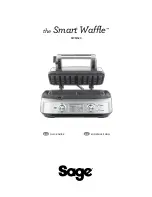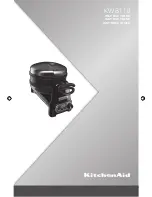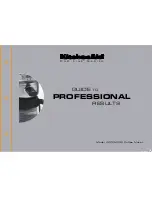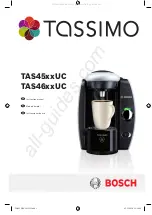
IM009
www.scarlett-europe.com
6
SL-1525
TROUBLESHOOTING
Before contacting the service centre, please, read the following table.
Bread does not rise
Gluten in your flour is of improper quality, or you don’t use baker's flour. (Gluten
quality may vary depending on the temperature, moisture, flour storage conditions,
and time of harvesting)
Try another kind of flour, another manufacture or another batch.
The dough became too hard because you added too little liquid.
The baker’s flour with high protein content takes up more water than other kinds
of flour, try adding extra 10-20 ml of water.
You use unsuitable yeast.
Use dry yeast in packages that have the “fast-acting yeast” inscription. This type
of yeast does not require prefermentation.
You put little yeast, or your yeast is old.
Use the measuring spoon. Check the expiry date of the yeast. (Store it in the
fridge)
Liquid got onto the yeast before kneading.
Make sure you add the ingredients in the correct order according to the recipe.
You added too much salt, or not enough sugar.
Check the recipe and measure the quantity with the measuring spoon.
Make sure there is no salt and sugar in other ingredients.
The bread top is
irregular
Bread is too loose
You used too much yeast.
Check the recipe and measure the quantity with the measuring spoon.
You added too much liquid.
Some kinds of flour take up more water than other kinds, try reducing the amount
of water by 10-20 ml.
Bread collapsed
after rising
The quality of your flour is unsatisfactory.
Try flour produced by another manufacturer.
You used too much liquid.
Try reducing the amount of water by 10-20 ml.
Bread rose
too much
You use too much yeast/water.
Check the recipe and measure the quantity with the measuring spoon (yeast) /
measuring cup (water).
Make sure that other ingredients do not give excess water.
You put not enough flour.
Weigh the flour carefully with the scales.
Bread is
pale and clammy
You use not enough yeast, or your yeast is old.
Use the measuring spoon. Check the expiry date of the yeast. (Store it in the
fridge)
There was a power failure or the breadmaker stopped during the baking process.
The breadmaker will switch off if it is interrupted for more than ten minutes. You
should remove the bread from the pan and restart the cycle with new ingredients.
There is flour
on the bread
You used too much flour, or too little liquid.
Check the recipe and measure the right quantity of flour with the scales or the
right quantity of liquid with the measuring cup supplied with the breadmaker.
Bread was mixed
Badly
You did not put the kneading blade into the baking pan.
Before adding the ingredients, make sure that the kneading blade is in the pan.
There was a power failure or the breadmaker stopped during the baking process.
The breadmaker will switch off if it is interrupted for more than ten minutes.
You may have to restart the breadmaker, but it may lead to a negative result if
kneading has already started.
The display shows
LLL after starting the
program
It means that the temperature in the breadmaker is too low. Stop the program, unplug
the breadmaker out the power outlet, open the lid and let the breadmaker cool, before
continuing the program.
The display shows
HHH after starting
the program
It means that the temperature in the breadmaker is too high. Move the breadmaker to
a warmer room.
The display shows
EE0/ EE1
after starting the
breadmaker
There was a power failure, error in the temperature sensor operation. Contact the
Service Centre.
Summary of Contents for Silverline SL-1525
Page 1: ......







































